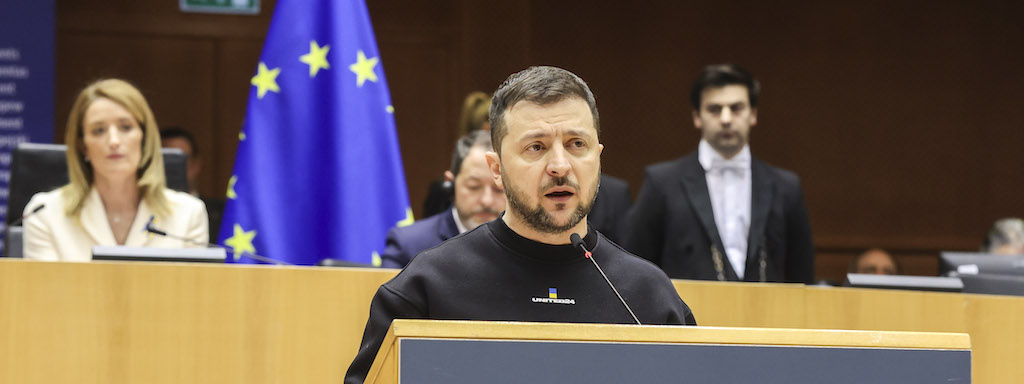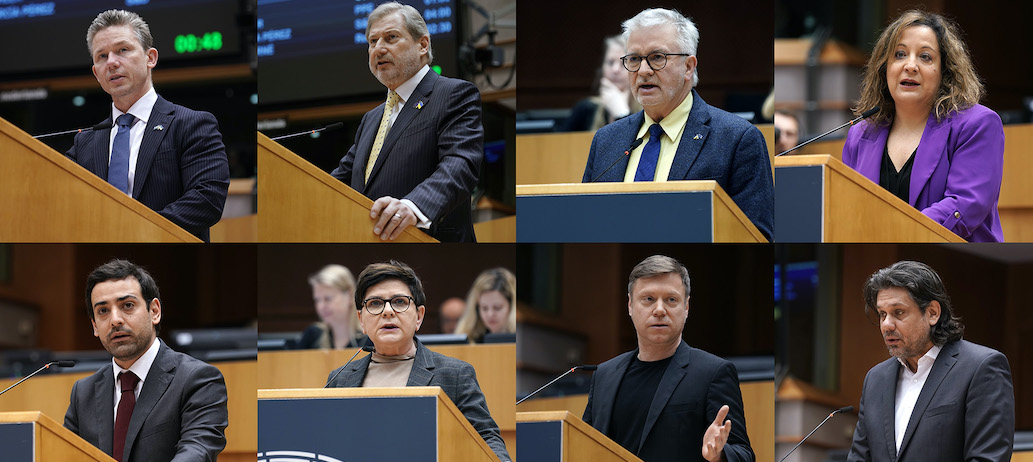
1/What are the need for industry data and interoperability standards to support decarbonization, information exchange, and accelerate innovation?
We now see the clear movement and momentum to decarbonization and the green energy transition. In parallel, the rise in digital technology and advanced analytics provide unique opportunities to not only migrate to new energy technologies, but to monitor progress, predict performance, integrate systems, ensure reliability and resiliency – and improve sustainability by optimizing products, solutions, and services like never before.
At the same time, we have changing dynamics in the sector that increase its complexity. Grids are moving from centralized to decentralized models. Energy producers have multi-OEM solutions that must be monitored as a system to ensure uptime and output. Venture capital is increasing and there are many new entrants in the market, disrupting different pockets of value creation. Governments, activist investors, and communities are increasing pressure for transparency of ESG metrics along value chains.
Easy data access among different stakeholders is a key element that will foster competitiveness while maintaining equitable participation along the entire energy value chain. The markets and infrastructure of different sectors, e.g., energy, transportation, and industry, will be strongly connected in the future. For this reason, secure and trustworthy data sharing is needed to leverage innovation within and between sectors.
However, the energy industry has been slow to adopt modern digital technologies, and due to its key role as critical infrastructure, can be risk adverse. We see that the transition to digital will be slowed by poor quality data, inaccurate, or missing data, lack of modern data architectures, and often tight and restricted- or hard to find –data. Optimising the energy system will require much better digital information, data transparency, and open standards, while ensuring appropriate security and data protection measures. Cyber security is an absolute must to build trust, confidence, and resiliency in grid stability as well as information flows.
To support these changes, standards and regulations are needed to fuel compatibility and interoperability; digitize information exchange; simplify product development; speed time-to-market for solutions; and, improve transparency and trust.
2/ What role can play AI in transforming the global energy landscape?
One thing is certain about the future: Interactions among energy systems will become substantially more complex. The laundry list of major challenges we face includes decarbonization, decentralization, energy storage, waste reduction and smart maintenance. Overcoming these challenges will require inventive ways of thinking that extend far beyond the approaches that we have traditionally applied in engineering. Artificial intelligence (AI) methods and frameworks will form the cutting edge of our efforts to overcome these intricate challenges.
To successfully master the tremendous challenges posed by the energy transformation, we need to go beyond incremental changes and come up with new and transformative innovations that transcend traditional engineering.
AI is the expert for the job, the technology that is just right for the huge amounts of data being generated today along all parts of the value chains, together with ever increasing computational resources. For example, machine learning methods allow it to systematically tailor products, solutions and services to the specific needs. AI-based solutions also greatly help handle the increasing complexity of energy systems resulting from decarbonization and decentralization Furthermore, they also allow for improved prediction of hardware durability to optimize maintenance cycles leading to reduced waste. By use of AI, efficiency and reliability of power plants can be increased, emissions can be reduced, and usage of material optimized – all contributing to higher sustainability. By implementation of self-optimized processes in manufacturing, delivery times can optimized. Autonomous operation of power plants enables higher safety and improved grid stability through more efficient electricity generation.
3/ Why it’s important to Identify some data sets to be made available as open data for certain use cases that are in the public good/health & safety? And more generally how manage the open data?
The concept of ‘open data’ has existed for over a decade and has supported everything from the plethora of navigation solutions to transparency on government spending to innovation with emerging applications in automotive. When certain data sets are entered into the ‘public domain’ we see innovation flourish in often unanticipated ways to forward society. That said, clearly, we must balance the need for the public good with the real concerns that companies have regarding
intellectual property, revenue generation opportunities, and customer consent and trust.
4/ Should sectoral standards be put in place for all ESG measures, including scopes 1 to 3? And why?
There should absolutely be standards in place for ESG measures, including scopes 1-3. It is in the public interest to have transparency and trust in the data which are reported, and how those data are measured and calculated. Without standards, there is increased burden and risk to the public interest that information reported by multiple companies is not comparable. We saw this recently with Covid-19 reporting, and various countries reporting statistics in ways that were not easily comparable country by country without extra legwork.
The biggest challenge is in tracking Scope 3, company supply chains. Whether it’s packaging, agriculture, manufacturing, or other suppliers, attention will continue to turn to this value chain. Introducing science-based standards will allow trust and transparency of those numbers, while reducing the cost burden to companies (especially small and medium sized businesses).
5/How Financial investments in digital enabling technologies could accelerate the transformation of the global energy landscape? And what type of investments?
From the data perspective, building up and retaining data and AI competencies is essential to keep Europe a region in leading-edge technologies.
This process spans early education, academia, and reskilling. To achieve this, close collaboration between public institutions and industry is needed. This can be driven through co-funding of research programs as well as supplying funding for data science and AI tracks at universities at all education levels.
Venture capital and startup funding are also important for building out an ecosystem of startups which continue to fuel innovation in areas such as battery storage, AI, additive manufacturing, sensor technology, and other technologies critical to digital.
6/ What are the stakes in ensuring a balance view between industry and public good? And how should we do it?
There is no person, no company, and no government immune to the effects of climate change. Therefore we all have a stake in identifying solutions that transition
and decarbonize to net zero as quickly as possible. Digital and AI will power the solutions of the future, but industry needs government support in setting the standards that ease the path and transition forward. Governments should work in partnership with industry and other stakeholders in developing standards that ensure the goals are reached without too much burden or by sidestepping the goals all together.
We have seen this approach be successful in automotive, for example, with Safety Related Traffic Information (SRTI). [https://www.acea.auto/press-release/data-for-road-safety-moves-from-proof-of-concept-to-long-term-deployment/?/press-releases/article/data-for-road-safety-moves-from-proof-of-concept-to-long-term-deployment]
It is also important, however, to provide incentive to industry to share their intellectual property and create opportunities for value creation.
7/ How Positioning the EU as the leader in standards setting, similar to GDPR?
GDPR was ground-breaking when it was released and has since become the bell weather for privacy standards. It is often the default standard that many global companies use when managing their customers sensitive data around the world, as it provides the ability to ensure compliance while reducing complexity in the applications and systems.
In a similar way, the EU can take the leadership position on setting data and digital standards to drive interoperability to support the energy transition. To complement this, a European Standardization Framework on AI workflow development and implementation is needed.
8/ Could you give us some examples of other industries who have done this well? And how can we follow those examples?
In addition to some of the examples we discussed, there are examples all around us. Our ability to move money easily across countries, internets standards and the rise of ecommerce, and shipping container standards for improved transparency in logistics. There are usually some good examples of another industry doing something well which we can build upon and tailor. It’s then important to understand what we can learn from them; how can we model based on what has been proven to work; and, how can we accelerate quickly with policy, investment, standards, and technologies as core pillars?
About Siemens Energy:
Siemens Energy is one of the world’s leading energy technology companies. We energize society by supporting our customers in transitioning to a more sustainable world, based on our innovative technologies and our ability to turn ideas into reality. With our portfolio of products, solutions and services, we cover almost the entire energy value chain – from power generation and transmission to storage. Our portfolio includes conventional and renewable energy technology, such as gas and steam turbines, hybrid power plants operated with hydrogen, and power generators and transformers as part of our high voltage products portfolio. A majority stake in the listed company Siemens Gamesa Renewable Energy (SGRE) makes Siemens Energy a global market leader in renewable energies with a market leading position in wind power. Siemens Energy employs more than 90,000 people in more than 90 countries worldwide.
For more information:
![]()
Media Relations: press@siemens-energy.com
Global website: www.siemens-energy.com

















